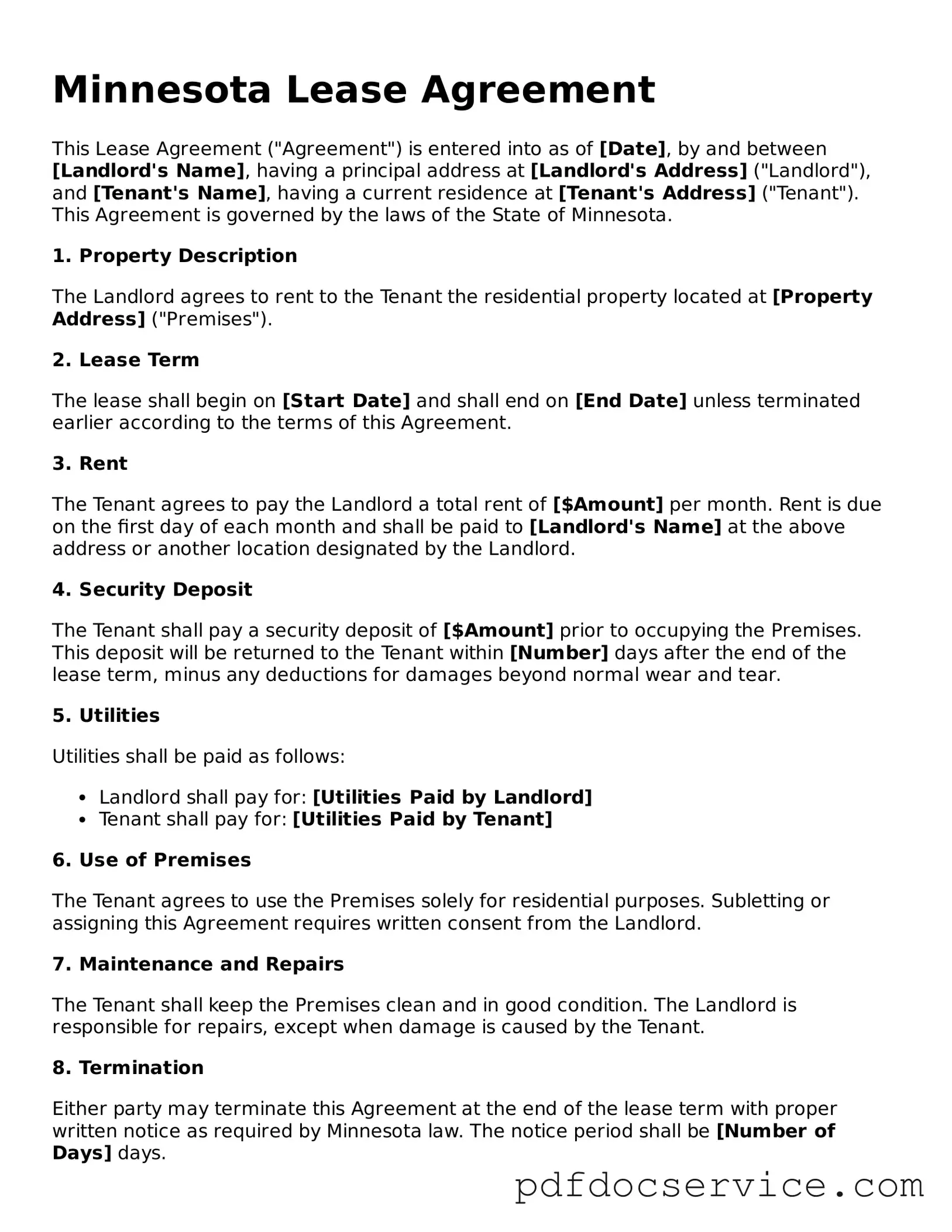What is a Minnesota Lease Agreement?
A Minnesota Lease Agreement is a legally binding document that outlines the terms and conditions under which a landlord rents property to a tenant. It specifies the rights and responsibilities of both parties, including rent amount, payment due dates, and rules for using the property. This agreement is essential for protecting the interests of both the landlord and the tenant.
What types of lease agreements are available in Minnesota?
In Minnesota, there are several types of lease agreements, including:
-
Fixed-term lease:
This lease lasts for a specific period, typically one year. It cannot be terminated early without mutual consent.
-
Month-to-month lease:
This agreement continues on a month-to-month basis until either party provides notice to terminate. It offers flexibility for both landlords and tenants.
-
Sublease agreement:
This allows a tenant to rent out their leased property to another person, with the landlord’s consent.
What are the required elements of a Minnesota Lease Agreement?
A valid Minnesota Lease Agreement should include the following key elements:
-
Names of the parties:
Clearly state the names of the landlord and tenant.
-
Description of the property:
Provide the address and details of the rental property.
-
Lease term:
Specify the duration of the lease, whether fixed or month-to-month.
-
Rent amount:
Clearly indicate the rent amount, payment due dates, and acceptable payment methods.
-
Security deposit:
Outline the amount and conditions for the security deposit.
-
Rules and regulations:
Include any specific rules regarding the use of the property, such as pet policies or maintenance responsibilities.
How much notice is required to terminate a lease in Minnesota?
The notice period required to terminate a lease in Minnesota depends on the type of lease. For a month-to-month lease, either party must provide at least 30 days' written notice before the end of the rental period. For fixed-term leases, the agreement typically remains in effect until the end of the term, unless both parties agree to terminate it early.
Can a landlord increase the rent during a lease term?
Generally, a landlord cannot increase rent during the term of a fixed-term lease unless the lease specifically allows for such increases. For month-to-month leases, landlords may increase rent by providing proper written notice, typically 30 days before the increase takes effect.
What happens if a tenant violates the lease agreement?
If a tenant violates the lease agreement, the landlord may take several actions, depending on the severity of the violation. Common responses include:
-
Issuing a warning or notice to correct the violation.
-
Charging late fees if rent is not paid on time.
-
Initiating eviction proceedings if the violation is serious, such as illegal activity or failure to pay rent.
Is a written lease agreement necessary in Minnesota?
While verbal agreements can be legally binding, having a written lease agreement is highly recommended. A written document provides clear evidence of the terms and conditions agreed upon by both parties, reducing the potential for misunderstandings or disputes in the future.
What should tenants do if they have disputes with their landlord?
If tenants encounter disputes with their landlord, they should first attempt to resolve the issue through direct communication. If that fails, they may consider the following options:
-
Review the lease agreement for relevant terms.
-
Seek mediation services to facilitate a resolution.
-
Contact local tenant advocacy organizations for assistance.
-
If necessary, pursue legal action by consulting an attorney or filing a complaint in small claims court.
